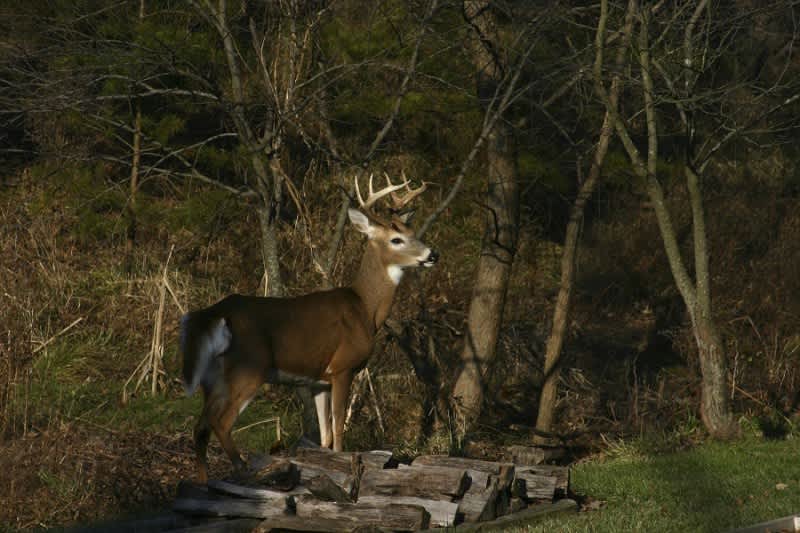How to Get Your Deer Out of the Woods with Ease
Bernie Barringer 06.12.15

Don’t wait until you have a big buck down a long ways from the truck to decide how to move it. Plan now so your job of getting your deer out of the woods is the easiest it can be.
Most public areas do not allow the use of any motorized vehicles, which can present a problem when the time comes to get a deer out of the woods. Just grabbing onto an antler and dragging the deer is a popular option but there are better methods for a long-distance haul.
A harness that allows you to put the weight of the drag on your shoulders, rather than your arms, is one helpful way to do it. Whenever you’re dragging a deer a long distance, it also helps to cut the legs off right above the joint; this really helps you get through thick stuff a lot easier.
I have a two-wheel cart, and I have brought deer out of some pretty rough places with it, but it is not my favorite mode of transportation for a dead critter. It seems like rough ground is always a problem, making the cart difficult to wheel without it tipping over. Logs, rocks, gopher mounds and hillsides are all out to make your life difficult when you have a buck strapped onto a cart. Then there always seems to be a multitude of saplings that the cart won’t quite fit between. I’m not a huge fan of carts.
With two guys, I have moved a deer out of the woods on a stretcher with surprising ease. With four guys it’s a breeze. If I didn’t usually hunt alone, I would definitely have a stretcher along on every road trip. I found that four guys can haul a 400-pound bear out of the woods on a stretcher better than any other motor-less way I know of.
Over the years, I have gravitated toward using a large plastic sled to haul deer out. The one I use is designed for ice fishing but it works great for hauling gear in and deer out. If I am going a long distance, I will cut my harvest’s legs off, which really helps keep it inside the sled. There are several additional advantages to using a sled. Imagine dragging a deer through a muddy swamp, then putting it in your vehicle along with all your equipment—what a mess that would be! A sled makes that job much cleaner and easier.
Another good part about a sled is that it contains blood. I can hoist one end of the sled on the tailgate and then lift the other end and slide the whole works about without removing the deer. Any blood is still within the sled and I can haul the whole works home like that. If I need to stay overnight in a motel on the way home and the weather is not below freezing, I will throw a couple bags of ice in the chest cavity to help keep the deer cold. The sled contains melting ice so it doesn’t flow all over your stuff.
To enhance the capabilities of my sled, I plan to design a handle so I don’t have to hold onto the rope. A handle would not dig into my hands as bad and with a lot of weight in the sled, the rope really pinches down on your fingers.
A sled slides nicely over a lot of junk. Downed logs are navigated with ease and most brush just goes under it. If there is snow on the ground there is no other method that compares. The issue of getting it between trees and saplings needs more attention. I wish my sled had a pointed front instead of a flat front.
The final option for getting a deer out of a tough spot is to bring it out in pieces. Here’s the best way I know how to do it. First, take the cape off and sever the head from the spine right behind the skull. Use the skin to protect the meat from the ground and keep it clean while you remove its front quarters. Then split the hide right down the back from the front to the tail. Now skin it down the sides to expose the loins and hindquarters. Take the loins off and separate each hindquarter at the hip joint. Be careful not to cut open the body cavity and expose the guts. All the time use the skin as much as possible to protect the meat from the ground. If you have a tarp or a large plastic garbage bag, it makes this job a lot easier.
If you are willing to take two trips, you can easily get it all out in two. But if you want to do it in one trip, you will find it a lot easier to bone out all four quarters and put the meat in garbage bags or cloth game bags in a backpack for carrying. I’ve only done this once and I don’t like doing it this way because the meat needs so much more care and cleaning later, but in some cases this is the best option.
Follow Bernie’s bowhunting adventures on his blog, bowhuntingroad.com.

